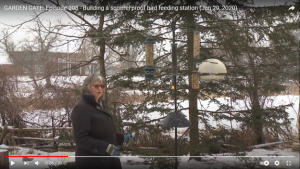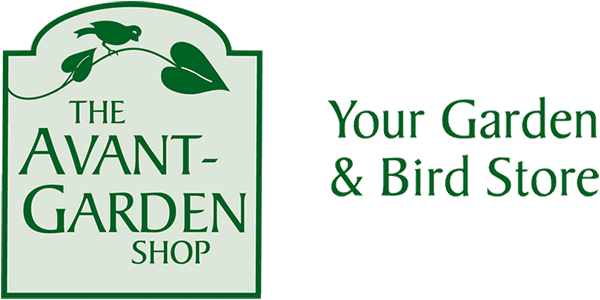 The two most recent Garden Gate episodes were filmed in my backyard. The first is about setting up a squirrel-proof bird feeding station. It aired recently and is now on the Avant-Garden Shop’s YouTube channel. The second is about including trees and shrubs in your landscaping plans to attract birds and provide shelter.
The two most recent Garden Gate episodes were filmed in my backyard. The first is about setting up a squirrel-proof bird feeding station. It aired recently and is now on the Avant-Garden Shop’s YouTube channel. The second is about including trees and shrubs in your landscaping plans to attract birds and provide shelter.
It may seem early to plan your garden, but planning can be a fun project, and seed suppliers are advising to order soon, based on the increased demand last year. There are several things you can do when planning your garden to attract and support a variety of species.
Habitat features
At the most basic level, each species needs, food, water, and shelter for hiding and sleeping. A yard that provides all these elements will likely be used by more birds. Each bird species has specific habitat requirements, but a few general principles will help you attract more of them.
Diversity
Some birds feed and nest in trees, others prefer shrubs, and other spend most time on the ground. The more diverse the habitat in your yard, the more bird species are likely to use it. There are two dimensions to consider when aiming to diversify your landscape: structural and species.
Creating three-dimensional variety in vertical and horizontal structure will attract more bird species. For example, having plants under shrubs under trees at the edge of a large open lawn will attract fewer species than having some shrubs under some trees here, some trees without shrubs there, some shrubs without trees there, and some open space.
In the same way, different tree, plant, and shrub species will meet different species’ needs, so a greater diversity of plant species will attract more bird species. For example, White-breasted nuthatches are associated with older deciduous trees, whereas Red-breasted Nuthatches prefer conifers. When choosing plants, try to choose native species over non-native varietals.
Food and water
Some birds eat insects, others seeds, others berries, and others are omnivorous. Structural and species diversity in your plants will provide more habitat for not only birds, but also for the insects, seeds, and berries that support them. Cool fact: native plant species (e.g., Sugar Maple) support a greater diversity of insects than do their non-native counterparts (e.g., Norway Maple). Keep that in mind when selecting your trees, shrubs, and plants, and consider dogwood, birch, spruce, pine, cedar, elderberry, serviceberry, and grape to support birds.
Leaving seed heads on plants not only simplifies your autumn gardening efforts but also provides food for birds to eat through the winter. Purple coneflower and Brown-eyed Susan are especially popular. Many birds also eat the seeds of conifers, such as spruce and pine.
Even a dead tree can provide wonderful habitat. If you have a tree die, rather than having it removed completely, consider having it limbed for safety but leaving the trunk behind. As it decays, the insects in it will feed woodpeckers, who might even choose to nest in it. Similarly, a pile of brush from tree and shrub trimming can provide shelter and nesting opportunities for species such as Song Sparrows.
Adding a water feature, such has a bird bath or small pond, will also attract birds, especially during a hot, dry summer spell.
Back to basics
Other ways to help the birds include avoiding pesticides and keeping cats indoors or contained if outdoors (outdoor cats are among the greatest causes of bird mortality).
There’s a lot to consider there, but it boils down to planting a variety of plant, shrub, and tree species in a variety of spatial arrangements. Adding a water feature and setting up a feeding station will enhance the quality of the habitat and attract more species. Enjoy!
